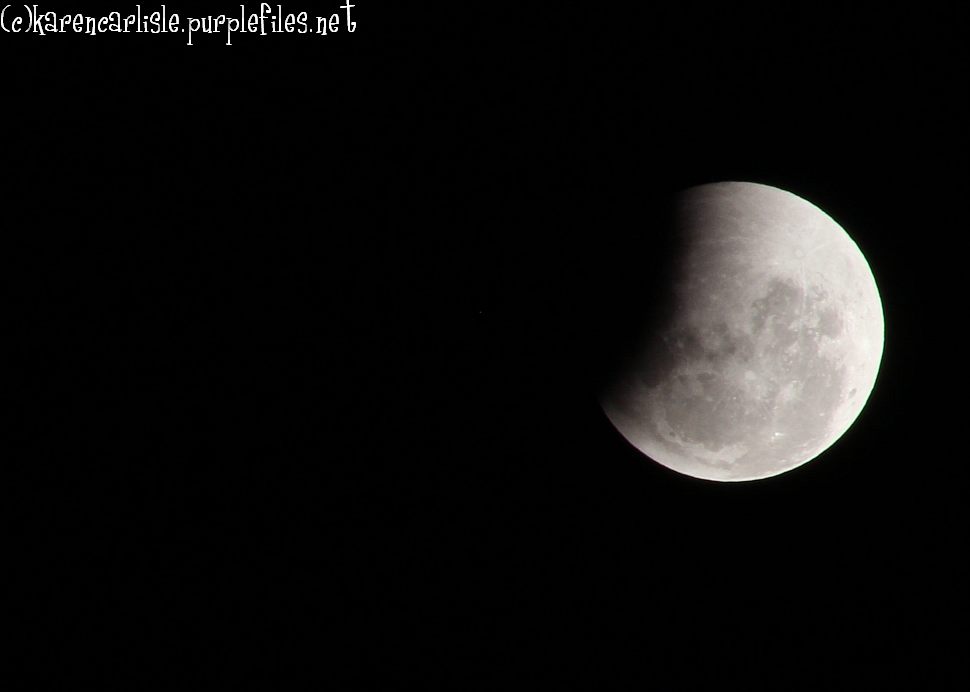Blood moons don’t happen every day. They only happen once in a … blue moon. (Well, maybe not that often.) I read someone online quoting Blood Moons only happen every 800 years or so. They are not that rare – about every sevearl years or so. However, we are going to experience this phenomenon four times over the next eighteen months – to the chagrin of many doomsdayers.
What is a Blood Moon? It is a lunar eclipse, during a full moon that results in a shadow causing the moon to appear ‘crimson’ (though it looked more like rosey pink to me).
I planned to take this opportunity to have another crack at photographing the moon. In the past, due to non-programmable point-and-click cameras, bad luck and insufficient lens magnification on my SLR and misplacing the tripod – all I had managed were some luminescent round circles suspended in the night sky.
I set to work doing some basic research on how to get a photo which would detail the craters in the moon, using only the equipment I already had. I felt just a bit inadequate – go to manual, close down the aperture, so the oncoming light won’t drown out the detail, and keep the shutter speed short (for the same reason). Why had I failed before?
I first tried some shots on 200 ASA but found 100 ASA gave much better detail (as would be expected). I think I had just been lazy (using automatic on occasion) and overthinking it (when previously using manual settings).
Unfortunately, by the time I arrived home after work, the blood had drained from the moon leaving only a spectacular full moon only partially eclipsed. So here are my shots of the partially eclipsed (non-spectacularly red) moon and the full moon in all its glory. It ain’t rocket science (unless you are studying or travelling to the moon).
More information on lunar eclipses can be found on NASA’s website.
One of my favourite books: Richard R Green’s Blue Moon Rising – always cheers me up.
Camp NaNoWriMo update: 4272 words so far. (almost half way there)


